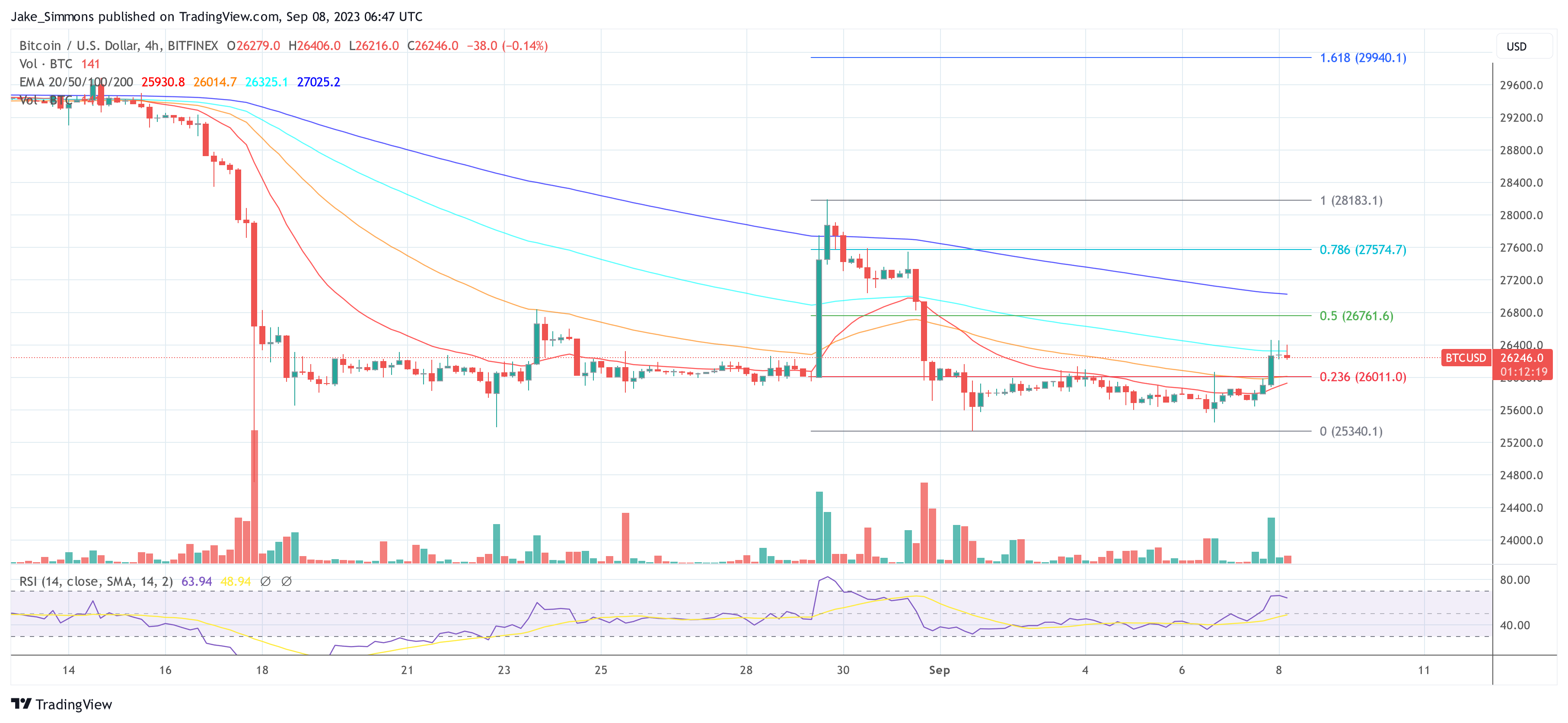[ad_1]
In a recent comprehensive report by Capriole Investments, Charles Edwards presents a compelling case for why 2024 will be a pivotal year for Bitcoin, potentially offering the highest returns in its current four-year cycle. The report delves into multiple facets of Bitcoin’s future, including its role as an inflation hedge, the upcoming Halving event, and the impact of imminent ETF approvals.
A Confluence Of Catalysts For Bitcoin
Edwards begins by addressing the skepticism surrounding Bitcoin’s performance as an inflation hedge. “Bitcoin gets a hard rep for its performance coming out of 2021 amidst growing inflation,” he notes. Contrary to popular belief, Edwards asserts, “Bitcoin was a great inflation hedge – it was when it needed to be.”
He emphasizes Bitcoin’s impressive 1000% rise from Q1-2020 to Q1-2021, outpacing all other asset classes. This surge, he explains, was a direct response to the Federal Reserve’s multi-trillion-dollar QE packages announced in March 2020. “Markets today move incredibly fast and are forward looking. As soon as macro announcements are made, the pricing-in begins,” Edwards states.
Drawing a comparison between Bitcoin and traditional hedges, Edwards points out that Bitcoin’s performance during the liquidity boom was unparalleled. “There is no doubt that Bitcoin dominated the crisis as the best inflation hedge,” he asserts, adding, “There is no second best. Bitcoin was the greatest inflation hedge we have ever seen.”
The second crucial catalyst for Bitcoin is the upcoming halving in April 2024. Edwards highlights the gravity of this event, stating, “The upcoming Bitcoin halving in April will drop Bitcoin’s supply growth rate to 0.8% p.a. and below that of Gold (1.6%) for the first time ever.” This means that “In April 2024, Bitcoin will for the first time become harder than Gold.”
Addressing the common argument that the Halving is already priced in, Edwards counters, “If there is one thing we have learnt from Bitcoin’s past it’s that the halving is never priced in.” He argues that 80% cycle drawdowns reset all interest in Bitcoin. Furthermore, Edwards draws parallels to previous cycles, noting that many on-chain metrics indicate that the current cycle mirrors those of 2019 and 2015 exactly.
Third, Edwards also touches upon the regulatory landscape, highlighting the clarity brought about by the CFTC’s classification of Bitcoin as a commodity in 2021. He also mentions the significant announcement of Blackrock’s Bitcoin ETF application and the federal appeals court’s order for the SEC to reconsider its rejection of the Grayscale spot ETF. His base case expectation is that the SEC will approve the spot ETF either in October 2023 or January 2024.
Discussing the potential impact of ETFs on Bitcoin, Edwards draws a parallel to Gold, noting the significant bull run that followed the approval of the Gold ETF in 2004. “When the Gold ETF approval hit, what followed was a massive +350% return, seven-year bull-run,” the analyst remarked, adding, “so, we have three incredible catalysts on the very near horizon,” he states, listing the upcoming halving, imminent ETF approvals, and Bitcoin’s status as the best inflation hedge.
In conclusion, Edwards presents a bullish yet cautious outlook. While he acknowledges the short-term bearish signals, he remains optimistic about the long-term prospects. “In Bitcoin’s four-year cycles, there’s typically 12-18 months where 90% of returns happen, followed by 2-3 years of sideways and down,” he observes, adding, “I am expecting that the single highest returning year of this cycle will be 2024 and I believe the data supports that thesis.”
At press time, BTC surged to $26,246, up 1.8% in the last 24 hours.

Featured image from iStock, chart from TradingView.com
[ad_2]
Source link







